The power of charity stories
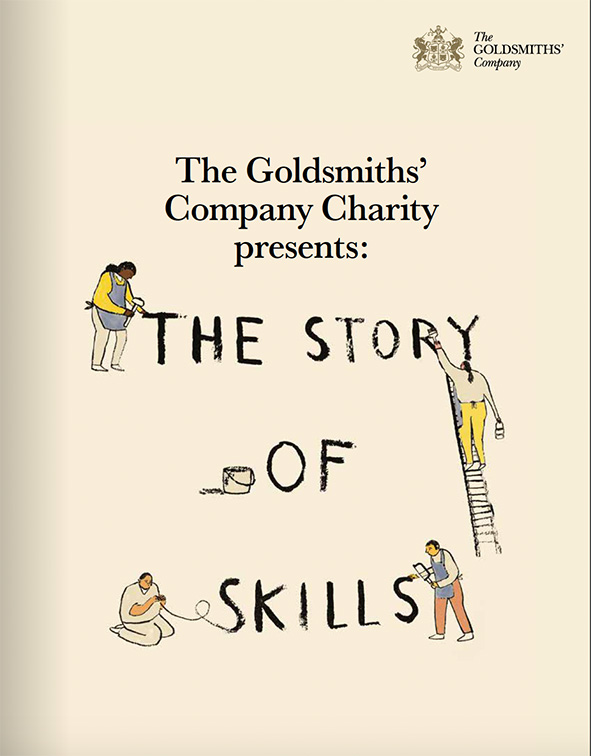
Charity stories are an incredibly popular and powerful way to convey the essence of what a charity does while engaging with readers. It’s common to see charities using stories to lead radio appeals, donor appeals and cases for support.
I’ve written a variety of stories for charity clients. For example:
- A Radio 4 charity appeal on behalf of Freedom from Torture focused on the story of John, Miriam and their five year old son, Sam, who had suffered torture in West Africa.
- An appeal to supporters of The Brooke opened with the account of a photographer who visited a coal mine in central Pakistan, where she witnessed the desperate working conditions for people and donkeys.
- My latest donor appeal for the Environmental Investigation Agency revealed the results of an undercover investigation into Ms M, an ‘entrepreneur’ who moved to Uganda in order to traffick pangolins from Africa to Asia.
Charity stories to demonstrate impact
When it comes to demonstrating how a charity is making an impact, stories definitely pack a punch.
That’s why I was delighted to be asked to write a series of stories for The Goldsmiths’ Company Charity to demonstrate the impact of their charitable activities. The stories act as an adjunct to their annual report and offer readers a detailed insight into who the charity is supporting and why.
Introducing The Goldsmiths’ Company
First, a bit of background. The Goldsmiths’ Company, one of the City of London livery companies, has a long tradition of making a substantial contribution to national life. Since it was founded some seven centuries ago, it has set up partnerships that make a positive, lasting impact both on the trade it serves and on the lives of people in diverse communities across the country.
The Story of Skills
The Goldsmiths’ Company asked me to write ‘The Story of Skills’, a series of 1,000 word stories that illustrate how and why they have supported different charities. The common theme was improving skills, with many of the projects involving prisoner rehabilitation.
My role involved:
- Drawing on background information about the various charities from proposals and reports.
- Interviewing key people from the charities, including the CEOs and, where possible, the people delivering the service.
- Writing up charity stories that blended facts and quotes in order to engage and inform readers.
Charity insights
For this project, I interviewed the leaders of four different charities to discover how the grants given by The Goldsmiths’ Company Charity had helped support their work. I also interviewed Judith Cobham-Lowe, a Director of the Goldsmiths’ Company, to write two further stories: one about the charity’s support for a junior school maths project in Kent and another about the charity’s Community Engagement Awards.
Anawim: A women’s centre in Birmingham
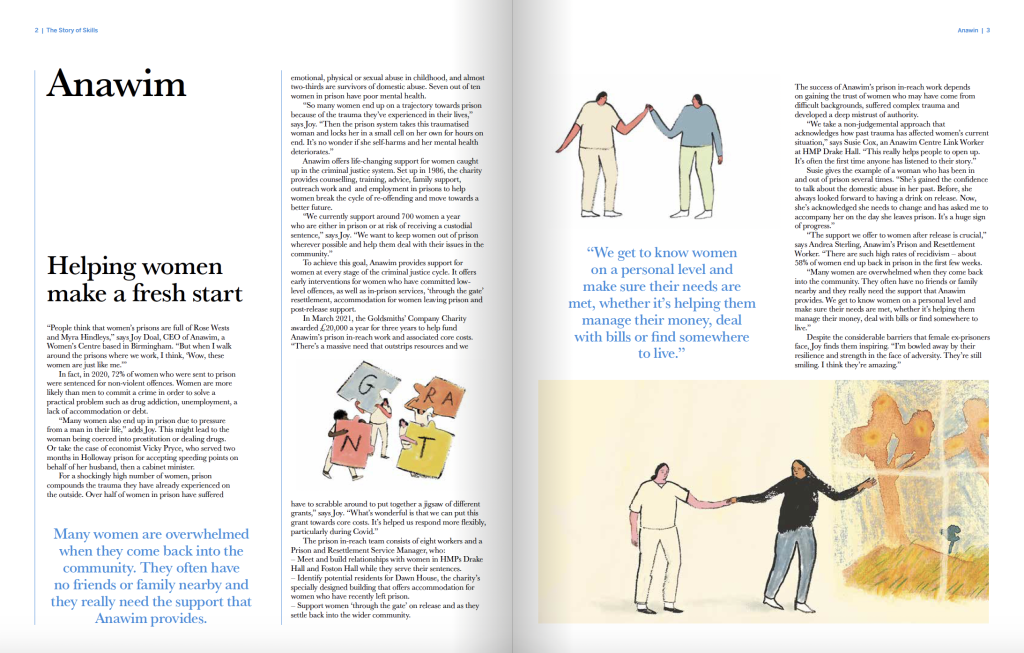
Anawim helps women to make a new life post-prison. Illustration by Danielle Rhoda
Anawim, a women’s centre based in Birmingham, helps women to stay out of prison where possible and deal with their issues in the community. Last year, it helped 700 women. For this story, I interviewed Joy Doal, the charity’s CEO, as well as two other key people on the team: Susie Cox, an Anawim Centre Link Worker at HMP Drake Hall and Andrea Sterling, Anawim’s Prison and Resettlement Worker.
“People think that women’s prisons are full of Rose Wests and Myra Hindleys,” says Joy Doal, CEO of Anawim. “But when I walk around the prisons where we work, I think, ‘Wow, these women are just like me.’”
The story starts with this vivid quote from Joy, then goes on to explain how rehabilitation is vital in helping to stop the cycle of offending that rips through the lives of prisoners and their families.
Fine Cell Work: training prisoners in needlework skills
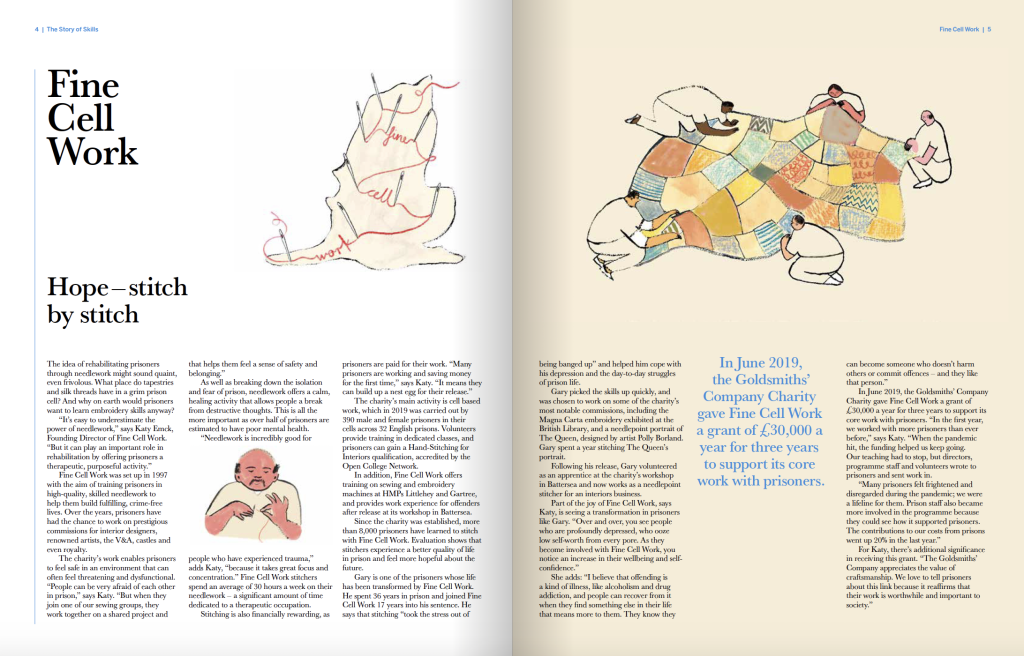
For 25 years, Fine Cell Work has helped rehabilitate prisoners through training in needlework skills. Illustration: Danielle Rhoda
When the Goldsmiths’ Company asked me to write a story about Fine Cell Work, it was a particular delight. Since Autumn 2019, I’ve been working with writers from 26, the writers’ organisation, to produce a book to celebrate 25 years of the charity.
The book, Threads of Time, launched this month and is now available to buy from the Fine Cell Work website. You can also read more about our Crowdfunder campaign to raise money to produce the book.
Katy Emck, the charity’s founding director, shared the story of Gary, one of the prisoners who had benefited from Fine Cell Work training. He found that stitching “took the stress out of being banged up”, helping him cope with his depression and the day-to-day struggles of prison life.
No Going Back: all-round support to turn lives around
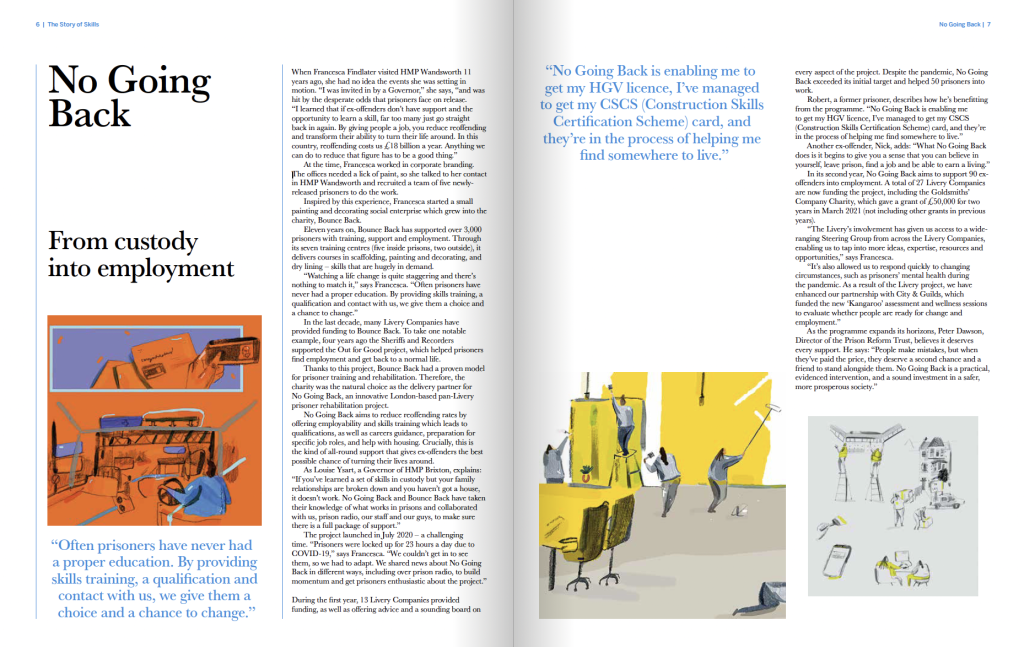
No Going Back helps former prisoners to find work. Illustration: Jess Nash
The story of the No Going Back project started when a governor of HMP Wandsworth invited Francesca Findlater in for a visit. Hit by the desperate odds that prisoners face when going back into the community, Francesca decided to do something about it.
She began by hiring a team of five newly-released prisoners to paint the offices of the design company where she was working. This led her to set up a charity, Bounce Back, which has now supported over 3,000 prisoners with training in scaffolding, painting and decorating skills.
“Watching a life change is quite staggering and there’s nothing to match it,” says Francesca Findlater.
The Goldsmiths’ Company provided a grant to No Going Back, a project delivered by Bounce Back, which has helped 50 prisoners back into work so far.
The Clink: training prisoners in hospitality and horticulture
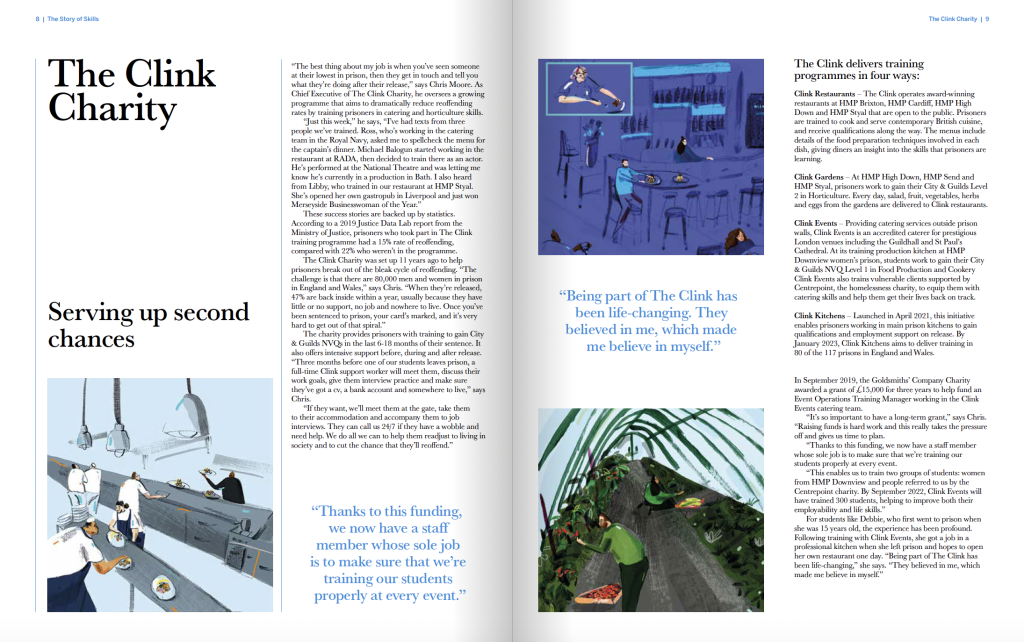
The Clink’s training helps ex-prisoners find work in the hospitality industry. Illustration: Jess Nash
When I asked Chris Moore, then the Chief Executive of The Clink Charity, what he loved about his job, the answer was illuminating. He told me about three texts he’d received that week from ex-prisoners.
One man was on the catering team in the Royal Navy, and he wanted Chris to spellcheck the menu for the captain’s dinner. Another ex-prisoner was letting Chris know that he’d gained a part as an actor in a production in Bath. The third text was from a woman who’d trained in The Clink’s restaurant at HMP Styal and had opened her own gastropub in Liverpool. She told Chris that she’d just won Merseyside Businesswoman of the Year.
The story went on to describe how a long-term grant from the Goldsmiths’ Company Charity had funded an Event Operations Training Manager for the Clink Events catering team.
Demonstrating charity impact
All of these stories demonstrate the impact of the charity by blending emotion (quotations from charity workers and charity beneficiaries) and facts (statistics about the difference the charity has made). It’s a powerful mix.
If you’d like me to write stories for your charity, please get in touch.
Find out more
- See my work for charity clients.
- Read a testimonial from Judith Cobham-Lowe, a Director of the Goldsmiths’ Company.
- Read my thoughts on how to become a charity copywriter.
Hire the illustrators
Two amazing illustrators worked on this project. Contact them here:
Daniella Rhoda – Instagram – @danielle_rhoda
Jess Nash – Instagram – @jess__nash